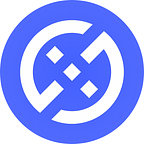The Ethereum Name Service (“ENS”) is getting a lot of attention this week with the airdrop of its governance token.
ENS is a distributed, open, and extensible naming system based on the Ethereum blockchain.
Today you will learn why DXdao uses ENS and why it’s so powerful.
“There are ENS users and then there are ENS users” — Martin Koppelmann, Gnosis founder
Before we get into what makes DXdao a hardcore ENS user, it’s important to understand what DXdao is.
- DXdao is a decentralized sovereign collective that develops, governs, and grows DeFi protocols and products. DXdao lives mainly on the Ethereum blockchain
- DXdao uses reputational (non-transferrable) governance to make decisions as a collective. This on-chain governance system of over 400 addresses pays contributors, makes product updates and controls a $100m treasury.
- DXdao does not use Web2 domain names. All products and DXdao’s homepage are hosted using ENS
On the Ethereum blockchain, DXdao looks like an Ethereum wallet address. Seen here: 0x519b70055af55a007110b4ff99b0ea33071c720a
Offchain, DXdao looks like a community of people all around the world that communicate with each other through different communication channels (text chat, audio, video, and even in person). Some community members are anonymous, others have faces.
As a whole, DXdao is a community of people and entities working together to achieve goals.
Why use ENS?
So this brings us to the question — how can an on-chain, decentralized collective build, launch, own and most importantly, govern products for the world to use?
Here’s where ENS comes in. ENS names like dxdao.eth, swapr.eth, and omen.eth can be owned by an Ethereum wallet address. In this case DXdao itself is the owner of the ENS names and has full control of them.
One of the features of ENS is that the owner of the ENS can set the ENS to resolve to an IPFS hash (or coming soon, a SkyNet ID).
This is VERY powerful. Therefore, DXdao via on-chain proposal can point the swapr.eth ENS to the product front-end.
Therefore, any user that wants to use Swapr knows that by going to swapr.eth, she will be accessing the latest version of Swapr recognized by DXdao.
There are some other details that matter. Most browsers currently do not resolve ENS names. Luckily, anyone with a Metamask wallet in their browser can simply type https://swapr.eth/ and Metamask will resolve the ENS for you. Other wallets, like Status also have this feature.
There are other ways to access an ENS name through a regular browser. The most common is using eth.link or the newly launched eth.limo. These mirror all ENS domain names with their unique top-level domain (TLD).
Throughout the DeFi space, most dApps are currently accessed by users through a centrally controlled DNS domain. This becomes a central point of failure for what is supposed to be a decentralized application. This central point of failure can be compromised, attacked, censored, or taken down.
A front-end that is actually owned and controlled by a decentralized group is more robust, antifragile and censorship resistant.
How does DXdao use ENS in practice?
Establishing DAO sovereignty as an on-chain entity from day 1, DXdao has focused on building products and capabilities that can be owned and governed by DXdao. How do you get a website approved and put control into the hands of DXdao governance?
Soon after its launch, DXdao solved this problem in what has become known as the ENS Update Proposal Process and is now used for all DXdao products and sites.
It works like this:
- DXdao contributors build a site and share the release with the community
- A community member uploads this to IPFS and verifies the IPFS hash
- An on-chain proposal is made to point the DXdao.eth ENS to the IPFS hash of the latest release
- The website is updated when DXdao governance approves and executes the proposal.
This same process is used for every DXdao product release and website update. Only proposals from DXdao governance could change the site, trail blazing new levels of censorship resistance for DAOs.
DAO-owned Front Ends
Each user-facing DXdao product is what we call a “DAO-owned front end”.
DXdao believes that as we move towards a truly decentralized world, more and more products will want to remove central points of failure. Central points of failure jeopardize DAO autonomy by giving outside powers exploitable leverage. Decentralization is vital to maintain open access to the decentralized economy for all.
DXdao has been operating with this process since the middle of 2019, so has over 2 years of experience owning and running decentralized front-ends.
How Do You Access dApps in “DeFi”?
Conclusion
DXdao’s use of ENS is a fundamental product fit, and while it’s still uncommon even in crypto, it’s powerful as a backbone for DeFi’s future. Decentralized dApps that enable users to exchange billions of dollars demand such infrastructure, and hopefully soon the space at large will begin to move in this direction.
DXdao is leveraging ENS to pioneer innovative approaches of owning and decentralizing its applications.
About DXdao: DXdao is a decentralized collective that builds and governs DeFi products. DXdao was spawned in May 2019 through a collaboration between Gnosis and DAOstack. Reputation (REP) is voting power in DXdao, and DXD is the financial token with a claim on profit from DXdao products.
DXdao products include Omen (prediction markets), Mesa (batch auction DEX), and Swapr (governance-enabled AMM). DXdao believes in governance and decentralization.
Connect with us: Discord, Twitter, Telegram, Keybase, DAOtalk Forum
